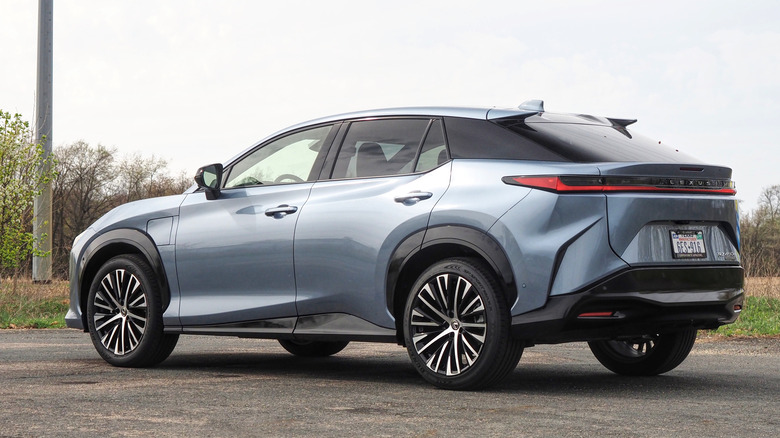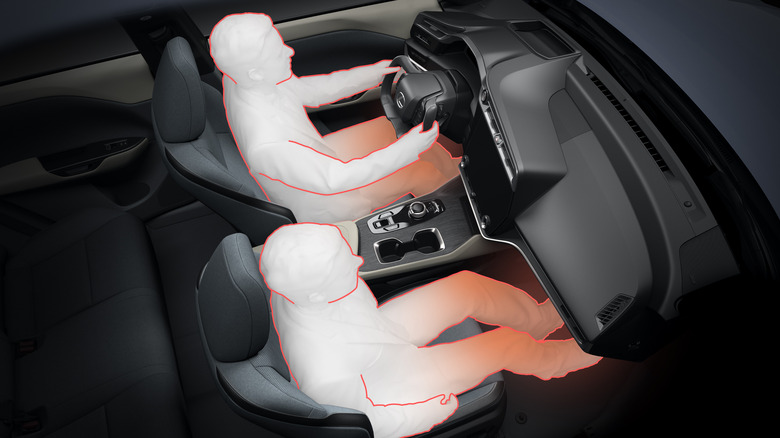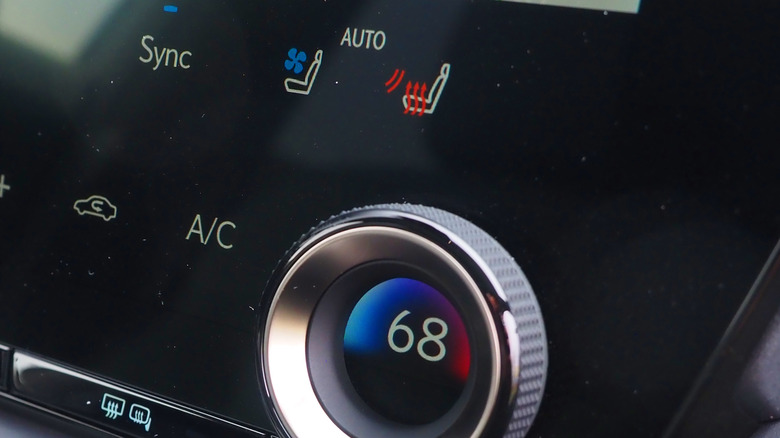Here's How The Lexus RZ's Innovative Radiant Heating System Works
The Lexus RZ is worried that your knees might be cold. Cabin temperature in modern vehicles may usually be a matter of adjusting the HVAC (heating, ventilation, and cooling) system up or down a few degrees or turning the heated or ventilated seats on or off, but Lexus' new all-electric SUV adds an extra talent when it comes to getting toasty. Lexus Radiant Heating picks up on technology perhaps more familiar from gardens and patio areas, though here it's for efficiency and speed reasons.
Dig into the economy menu present on many electric cars, and you'll typically find that cabin climate is the second most power-hungry application after driving itself. In traditional, internal combustion vehicles, heat usually isn't in short supply. Indeed, it's a waste product from the engine itself, and can readily be repurposed to warm up the cabin and its occupants. In EVs, however, the drivetrain produces a lot less heat. Getting the interior up to the desired temperature can be a significant drain on the battery, and that reduces the overall range in the process.
Blasting the heater is a great way to drain the battery
There are a few ways that electric cars have tried to change how we handle heating and cooling in the cabin. The ability to switch to a single zone when only the driver is onboard is probably the original one: after all, why blast warm or cold air at empty seats? Then there's cabin preconditioning, which — either according to a schedule or on-demand — can turn the HVAC on while the EV is still plugged into the wall charger, thus saving onboard power for propulsion.
Heat pumps are increasingly found, either standard or an option, using ambient exterior heat to help warm the interior. Heated seats are often more common standard features on electric vehicles, too, since directly heating someone rather than the whole cabin can also be more efficient. That's the same sort of strategy that Lexus Radiant Heat takes, only it isn't coming from within the seat but the dashboard, instead.
Unlike convection heating, which warms the air, radiant heat relies on infrared radiation. That means only solid objects in the path of that infrared are warmed. In the case of the RX, the heating elements are built into the lower instrument panel and steering column panel, roughly at knee level.
A toasty blanket for your zero-emissions driving
The result is much like a blanket being draped around the knees of the driver and the front passenger. Targeted warmth that, in the process, is more economical overall: Lexus says that not only does the radiant heat system produce a noticeable effect more rapidly than traditional cabin heating, but it consumes around 8% less power.
It's designed to join, rather than replace, more familiar heating methods, and the Lexus Climate Concierge — which can adjust settings of things like the HVAC, heated and ventilated seats, and heated steering wheel — will automatically manage the settings of each for maximum impact. If the driver or passenger's knees come into contact with the radiant panels, meanwhile, they switch to a safe 109-degree Fahrenheit setting to avoid undue discomfort.
Radiant Heat is standard on the 2023 Lexus RZ Luxury trim and a $175 option on the RZ Premium trim. As standard, the EV comes with dual-zone climate control, heated and ventilated front seats, and a heated steering wheel. The Luxury trim also has heated rear outboard seats.


